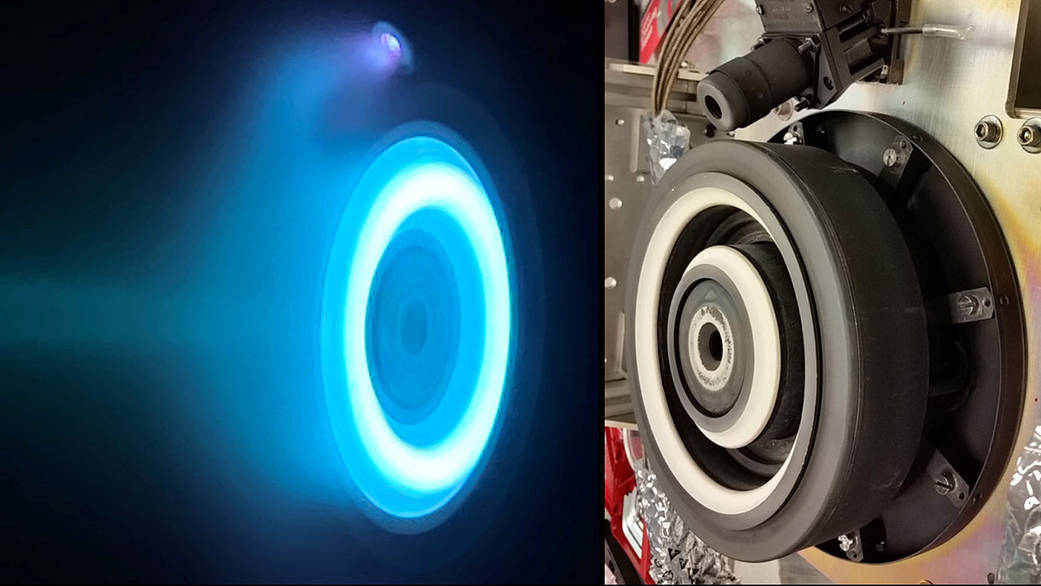When it comes time for NASA’s Psyche spacecraft to power itself through deep space, it’ll be more brain than brawn that does the work. Once the stuff of science fiction, the efficient and quiet power of electric propulsion will provide the force that propels the Psyche spacecraft all the way to the main asteroid belt between Mars and Jupiter. The orbiter’s target is a metal-rich asteroid also called Psyche.
当NASA的普赛克航天器在深空为自己提供动力时,完成这项工作的将是大脑而不是肌肉。曾经是科幻小说中的东西,高效和安静的电力推进将提供力量,推动普赛克航天器一直到火星和木星之间的主要小行星带。轨道飞行器的目标是一颗富含金属的小行星,也称为普赛克。
The photo on the left captures an operating electric Hall thruster identical to those that will propel NASA’s Psyche spacecraft, which is set to launch in August 2022 and travel to the main asteroid belt between Mars and Jupiter. The xenon plasma emits a blue glow as the thruster operates. The photo on the right shows a similar non-operating Hall thruster. The photo on the left was taken at NASA’s Jet Propulsion Laboratory; the photo on the right was taken at NASA’s Glenn Research Center.
左边的照片拍摄了一个正在运行的电控霍尔推进器,该推进器与推动NASA普赛克航天器的推进器相同,该航天器将于2022年8月发射,前往火星和木星之间的主要小行星带。当推进器运行时,氙等离子体会发出蓝光。右边的照片显示了一个类似的非运行的霍尔推进器。左边的照片是在NASA的喷气推进实验室拍摄的;右边的照片是在NASA的格伦研究中心拍摄的。
Psyche’s Hall thrusters will be the first to be used beyond lunar orbit, demonstrating that they could play a role in supporting future missions to deep space. The spacecraft is set to launch in August 2022 and its super-efficient mode of propulsion uses solar arrays to capture sunlight that is converted into electricity to power the spacecraft’s thrusters. The thrusters work by turning xenon gas, a neutral gas used in car headlights and plasma TVs, into xenon ions. As the xenon ions are accelerated out of the thruster, they create the thrust that will propel the spacecraft.
普赛克的霍尔推进器将是第一个在月球轨道以外使用的推进器,表明它们可以在支持未来的深空任务中发挥作用。该航天器将于2022年8月发射,其超高效的推进模式使用太阳能电池阵列来捕捉阳光,并将其转化为电力,为航天器的推进器提供动力。推进器通过将氙气(一种用于汽车前灯和等离子电视的中性气体)转化为氙气离子而工作。当氙气离子被加速带出推进器时,它们产生的推力将推动航天器。
Solar Electric Propulsion Makes NASA’s Psyche Spacecraft Go
Image Credit: NASA/JPL-Caltech
图片来源:NASA/JPL-Caltech







